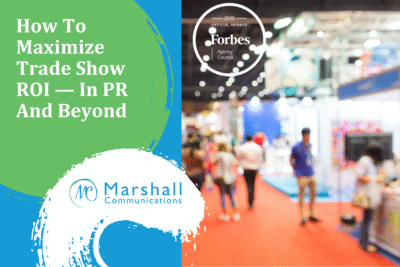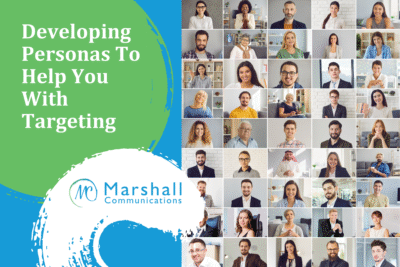Posted on: September 8, 2021
By Nancy Marshall, The PR Maven®

- Relationship building through experiences such as public service can help you connect with customers and give your brand staying power.
While you might have a dream to take your business in one direction, plans can change, creating an opportunity to rework your brand.
For example, a family business may not always be destined to stay in a family. Phil Harriman learned this through his own experience.
When Phil was studying business administration and risk management at Husson University, his dream was to become the third generation to run his family’s supermarket chain. He aspired to follow in the footsteps of his father, who had taken over from his own father and uncle.
But family circumstances were such that his father became ill before Phil was ready to take over the reins of the business, and Phil needed to rethink his path.
“Life happens, and a year away from graduating from college, I was looking for a new dream,” says Phil.
This experience led Phil to reinvent his career and develop a brand that could help businesses navigate financial transitions. In 1983, he went on to found Lebel & Harriman, LLP, one of the largest business succession planning firms in New England. Now he helps his clients plan for the same types of unexpected changes in a business’ financial path that he once ran into.
Phil also established a public service career on the Yarmouth town council and served four terms in the Maine senate. Today, he still guides hundreds of family businesses in the region as they prepare to find the best solutions during periods of transition — whether those transitions are expected or not.
Phil shares tips for how to build a personal brand by listening to your instincts and building up your public persona on Episode 145 of The PR MavenⓇ Podcast.
 1. Align passions with instincts
1. Align passions with instincts
Although Phil had planned to take over his family’s business, he knew he had to come up with a different plan. Now, when his clients are trying to find the next iteration of a family business, he has a solution to help them find the right path while staying true to their brand.
Phil talks about avoiding a situation in which a client may continue a family business because of obligation — rather than following a true passion — and the problems this might create for the brand and its authenticity.
The key is to match the company’s future with how the client is thinking logistically, emotionally and instinctually — what Phil calls aligning heads, hearts and stomachs.
“When people are aligned logistically and emotionally, and their instincts are all lined up, they can make and implement life-defining decisions.”
This has been a key part of his personal success when working with clients and building his own brand.
2. Be proud of what you do
In his work with hundreds of family businesses, Phil has learned that every company will hit roadblocks: One day it might be finances, the next it could be inventory, and another, advertising or human resources. Phil helps his clients see how to get past these obstacles by preparing for the future and staying focused on their brand’s values in the meantime.
One way to help your own clients is to be proud of your own work; knowing how to communicate this attracts clients to your business. He encourages his clients to find what makes their brand unique and then stick to it.
“If people don’t understand what your passion is, what you are good at, what you are proud of and what makes you satisfied, they will not be as eager to engage with you, regardless of your location or your product,” he explains.
When Phil served on the Maine Senate, he experienced the significance of this passion firsthand, as he supported causes and legislation that would affect his entire community.
This time in the public eye also helped him connect with clients to build up his brand. “When I had the honor of being elected to the Maine Senate, I realized that not only was I responsible for the constituents who elected me, I also had an obligation to my entire state.”
3. Get the story as a business tool
As a PR professional, you’re working with people who have feelings and instincts, but you’re also working with those people’s businesses (whether the business is a person or a large firm of some kind). And while clients’ heads, hearts, and stomachs are key, a story is just as important when serving your clients.
Phil has learned that it’s not his place to say how a client’s story should unfold — rather, it’s his goal to fully understand what feels right for each business owner. Before Phil can start working with a business on a transition plan involving attorneys and accountants, he has to know that story.
He explains his process: “First I want the story, and then we’ll go do math, and then we’ll go do law.”
The story encompasses the heart of the business, or what Phil calls the “big picture,” likened to finding the corner edges when reassembling a puzzle.
Sharing the company’s story is also a major part of Lebel & Harriman’s PR strategy. Phil focuses on interesting experiences and aha moments that might inspire his clients to take action.
Doing the same when you interact with your own PR clients can set you apart as a unique, memorable brand, because clients notice when you take the time to know them and their businesses.
4. Build individual relationships to increase your audience
Learning a client’s story helps Phil foster trust and build his client base. He calls this a focus on building individual relationships by finding shared connections, rather than focusing on business experience and skills. Those shared moments can set you apart from other brands.
Phil explains how this works in practice:
“Our strategy has been more about building individual relationships and using the opportunity to share with others — whether it’s accounting firms, chambers of commerce, or networking groups — and to join in conversations about the work that we do. It’s not based on who we are and how long we’ve been around, but rather talking about some of the interesting experiences we’ve had.”
Building relationships is a PR strategy that has the staying power to carry a brand through periods of transition and change.
This is based on episode 145 of The PR Maven® Podcast, a podcast hosted by Nancy Marshall. Weekly interviews feature industry leaders, top executives, media personalities and online influencers to give listeners a peek into the world of public relations, marketing and personal branding. Subscribe through Apple, Spotify or wherever you listen to podcasts.










